All Night Long: Mike Forney & Telstar
On a November night in 1962, T. Michael Forney made the national news by locking himself inside the studio at KPUG-Bellingham, WA and playing, over and over again, the newly released single “Telstar” by The Tornados.
 Forney, the evening jock at the 1000 watt AM radio station, was in his early 20s and a student at Western Washington State College (WWSC). Several of the KPUG jocks were attending college or had recently graduated. In those days, rock music and college life went together. This WWSC homecoming button from 1962 reinforces that point.
Forney, the evening jock at the 1000 watt AM radio station, was in his early 20s and a student at Western Washington State College (WWSC). Several of the KPUG jocks were attending college or had recently graduated. In those days, rock music and college life went together. This WWSC homecoming button from 1962 reinforces that point.
The memorable night Mike Forney’s name became linked with the record “Telstar” has survived in the annals of Bellingham folklore. The young jock’s choice of “Telstar,” as the record he would play repetitively, was timely. The hit single had been inspired by the launch of the first U.S. satellite. It was the dawning of the space age. By the end of ’62, the Soviets had launched several small Sputnik satellites and four cosmonauts. America had launched the larger Telstar communications satellite and Mercury Project astronauts Shepard, Grissom, Glenn, Carpenter and Schirra.
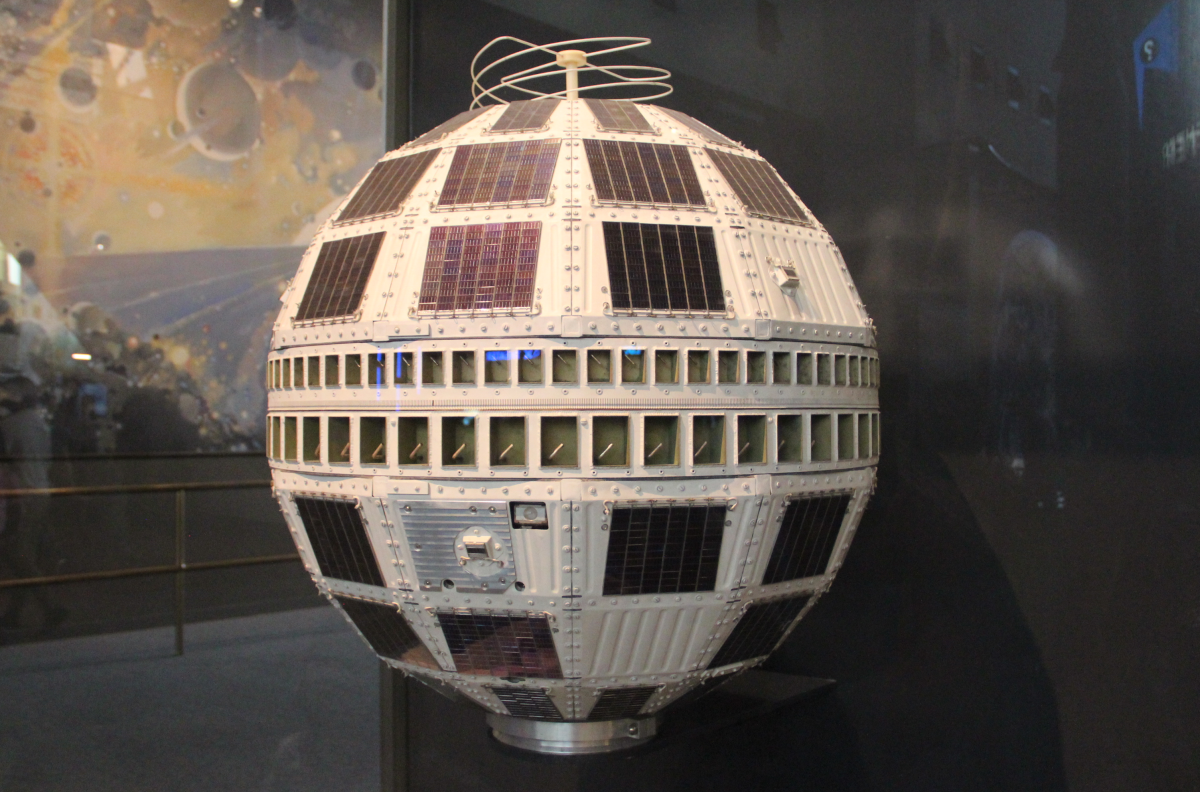

Worldwide press coverage, focused on the Telstar satellite, motivated Britain’s Joe Meek (a record producer, songwriter, and studio engineer) to create a futuristic instrumental. It was credited to the group The Tornados. In fact, the “spacey” sound was the result of Meek applying innovative electronic effects to the initial recording. Ultimately, Meek became a tragic figure. In 1967, after a long battle with mental health issues, Meek shot his landlady and took his own life.
Depression weighed down Joe Meek throughout much of his lifetime, but in 1962 “Telstar” became a huge international hit. Only three prior British singles had made it to #1 on the Billboard Charts in the United States. “Telstar” was the fourth Brit single to reach #1. It has been designated as the first ever single by a British “group” to top U.S. charts.

In the early sixties, before music videos were commonplace, “Telstar” was made into a short film. It must rate as one of the earliest music videos. The vintage clip captures the excitement of the space age and the innocence of the era. The video is at ad free Vimeo so click on the start button 2x – the first time to go to Vimeo and the next time to start the video.
Stepping Back into the Sixties
Bellingham was typical of “small town USA” in the 1950s and ’60s. The core of retail and commerce was in the central business district downtown. This was several years before shopping malls popped up on the outskirts of town. In Whatcom County, where Bellingham is the county seat, there were only four radio stations. Two were full-time AMs, another was an AM daytimer, and another was an FM. In those days, FM stations were secondary facilities. AM radio was king!


KPUG was a top radio station in Whatcom County. It dominated the ratings (30+ audience share) from mid-days into the night. The pop and rock format targeted younger kids, teens, college students, and young adults. The air-staff in ’62 was impressive. Along with Forney, there was Gary Bruno (later known as Gary Taylor at KJR-Seattle); Dave Hall (longtime KPUG announcer, PD, engineer, salesman); Danny Holiday (a legend at KOL and KBSG in Seattle); John Sandifer (KPUG news director, later a Seattle Radio and TV journalist); and Dick Stark (sportscaster of renown, KPUG sales and management). “The “Collegian,” a WWSC campus publication featured an article on that very cast of “looney” KPUG guys back in 1963. (Read it here.)
A cultural phenomenon that was changing the landscape in the late fifties and early sixties was the drive-in restaurant. Across America, kids listening to radios in their cars would cruise from one popular drive-in to another. The soundtrack to the drive-in scene was rock ‘n’ roll and pop that blasted out of loud speakers, jukeboxes and cool cars.
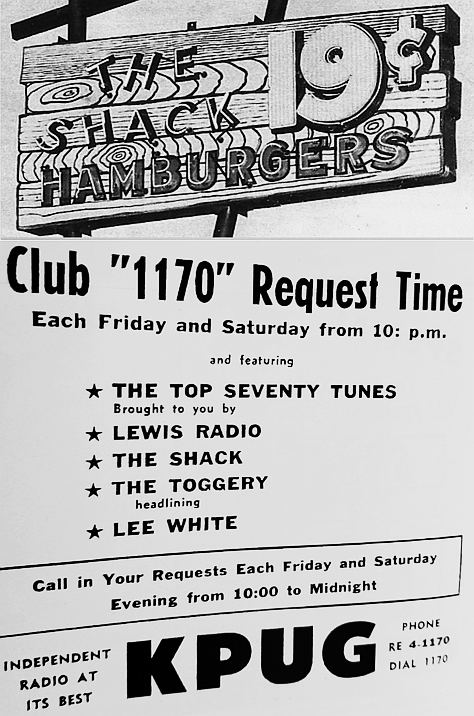 Bellingham kept pace with national trends. There were dozens of drive-ins scattered about the city. Two of the most popular spots were “The Shack” (Home of the 19¢ beefy) and “Bunk’s.” Both establishments were close to Bellingham High School (the only high school in town at the time). KPUG’s management realized that rock music and drive-ins went together like hamburgers and fries. With strong ratings in younger demographics, KPUG co-promoted with local drive-ins. The KPUG promotional poster in the photo hung on the wall inside “The Shack” drive-in.
Bellingham kept pace with national trends. There were dozens of drive-ins scattered about the city. Two of the most popular spots were “The Shack” (Home of the 19¢ beefy) and “Bunk’s.” Both establishments were close to Bellingham High School (the only high school in town at the time). KPUG’s management realized that rock music and drive-ins went together like hamburgers and fries. With strong ratings in younger demographics, KPUG co-promoted with local drive-ins. The KPUG promotional poster in the photo hung on the wall inside “The Shack” drive-in.
Mike Forney’s weekday shift ran from six to midnight. It was on the night of November 15, 1962 that Forney carried out his “Telstar” stunt. Dick Stark, a veteran of more than 50 years at KPUG, was there. Here’s his version of the story:
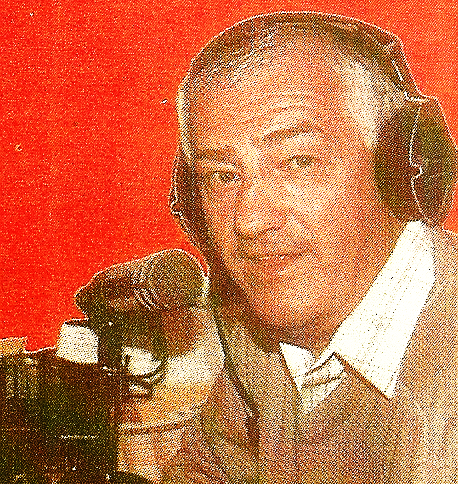
“I remember that night well. I guessed something was up when, with little or no explanation, management gave the staff a memo that told us to vacate the building by 6 p.m. I was one of the last people out the door and, as I drove away, somebody on the inside was pasting over all of the windows with butcher paper.
“Forney announced, not far into his show, that he was going to begin playing exclusively ‘Telstar.’ However, Mike told listeners he couldn’t keep doing so unless they called in to the station with a strong show of support. Response was immediate. Typical of live radio of the era, the phone lines lit up with an avalanche of incoming calls.
“Mike also informed listeners that they needed to demonstrate their support every hour. Only those people in favor of his playing ‘Telstar’ should call in. That way he could count every call received as a ‘vote of confidence.’ Mike said he wouldn’t lift the receiver to his ear, since he didn’t want to speak to anyone. This method of handling calls was meant to thwart KPUG management if anyone in power attempted to end his show or fire him by way of a telephone call.”
Editor’s note: The audio track below features a sound clip from Forney’s 1962 aircheck, Mike explained to listeners how they could best show their “votes of confidence” for his lock-in.
Run time :58
Stark continued, “I was listening at home. I could tell that listeners liked Mike’s stunt and they wanted to participate. Many calls were coming in and the momentum was going his way. Audience involvement was ratcheted up a notch when he asked listeners to drive to the station and to park in the parking lot. In theory, if the parking lot was full of cars, KPUG management would have a hard time getting into the station to shut down Mike’s show.
 “Before long, the parking lot was packed with cars. The bad part was vehicle traffic had overflowed onto Sunset Drive. Sunset has long been a busy highway where people drive at speeds anywhere from 35 to 50 MPH. Before long, sheriff’s deputies responded to the traffic jam and they were none too happy with Mike’s antics.
“Before long, the parking lot was packed with cars. The bad part was vehicle traffic had overflowed onto Sunset Drive. Sunset has long been a busy highway where people drive at speeds anywhere from 35 to 50 MPH. Before long, sheriff’s deputies responded to the traffic jam and they were none too happy with Mike’s antics.
“During the show, a telegram came in from the now shut Blaine Air Force Station. It said: ‘All of our service men support the deejay’s decision to keep on playing ‘Telstar.’

“As a KPUG employee, who was listening that night, I thought Forney’s stunt was highly entertaining. Even after ‘Telstar’ had been played to oblivion, Mike kept coming up with tongue in cheek zingers. He delivered lines like ‘Well, here’s a new hit’ or ‘Here’s one maybe you’ve heard before called ‘Telstar.’ The rumor around town was that Mike chose to play ‘Telstar’ because he liked the record so much. I suspected that he wanted to play it till everyone was sick of it, but only Mike knows for sure.

“Despite rumblings that suggested otherwise, Mike Forney was not fired by our management at KPUG. That was really never a consideration. It has always been my belief that Mike originated the idea for his lock-in bit and Jim Tincker, general manager, gave it his blessing.
“The incident was good publicity. The story of Mike’s unique and unexpected broadcast was even reported on the national news. I still run into a few old-timers who remember Mike’s show that night. Whenever I hear ‘Telstar,’ I am instantly transported back to 1962 and memories of Mike Forney playing that hit song over and over again.” – Dick Stark
Thanks to Dick Stark’s memory, that is where we left off in 2016. However, since Mike Forney has now been found, let’s get his side of the story.

“People have asked me why I chose to play ‘Telstar.’ The answer isn’t complicated. The record had just been released and it was starting to get significant airplay. I thought it was a unique instrumental and it would be the perfect vehicle to pull the ‘lock-in’ stunt that I had in mind. Being a new release, the record was fresh enough to withstand continuous airplay. On the other hand, it was just irritating and grating enough to drive management (and officialdom) nuts. I have to admit that after listening to it repeatedly that night, I decided to play ‘Telstar’ very sparingly thereafter.

“The ‘lock-in’ was an off the wall idea of mine. I proposed it to morning DJ and music director Gary Bruno. One of us, not sure if it was Gary or me, told Jim Tincker (excellent GM and nice guy) about the plan. Only Gary and, to a much lesser degree, Tincker had advance warning of the stunt. In retrospect, Tincker didn’t have a clue exactly what it was I intended to do.
“That evening I played that damned record 43 times. I wanted listeners to think I might end up fired the next day. I encouraged listeners to call me. I said their calls were a way of showing support for what I was doing. Then I asked them to drive to the station in their cars. I hadn’t expected participation to be such that the cars would create a traffic hazard on the main road.
“On the morning after my stunt, other KPUG deejays told listeners they didn’t know if I would be back on-air that night or not. Frankly, that next day I wasn’t so sure I still had a job. Word got back to me that Jim Tincker was miffed about all the fallout he took. It wasn’t helpful that the sheriff’s office had contacted him about the traffic jam I’d been responsible for on Sunset Drive.
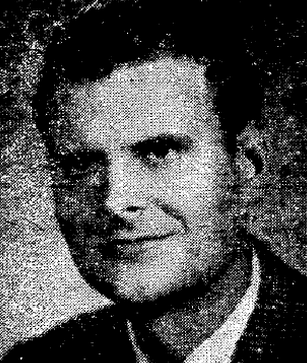
“I realized other feathers had been ruffled when mid-day guy, Dave Hall (who spent most of his adult life at KPUG), was annoyed with me. He described my behavior as ‘outlandish.’ Dave couldn’t fathom why I had played the same record over and over again for most of the night. When ‘Quiet Dave’ (the mild mannered gentleman of the crew), criticized me now that really got my attention.
“I wondered if I had pushed the boundaries too far. But, despite any self-doubts I initially had, my job at KPUG was secure. In the weeks to come, the U.S. Mail delivered dozens of flattering cards and letters of support. KPUG management also received a number of letters that were complimentary towards me. One prize possession that came in the mail was a homemade poster from a listener who had drawn pictures of the Telstar satellite and then written the bold caption ’43 times.’ Over the years, those words ’43 times,’ helped me remember the number of times I played ‘Telstar.’ I would share a photo of the poster, but I am sorry to say it disappeared in one of the many moves I made in my lifetime.
“I have been asked if I really ‘locked myself’ in the studio. Well, I told listeners all of the doors were locked and that was absolutely true. I was alone the whole night. Gary Bruno and other staff purposely stayed away to instill the impression that this was a rogue act on my part. My decision to keep going with the stunt, for the several hours it lasted, was bolstered by the many ‘votes of confidence’ I received from the listeners.
 “Nearly 60 years later, I no longer recall exactly what time I began playing ‘Telstar,’ or exactly when I stopped playing it. And I can’t tell you specifically why I finally shut down the stunt. The traffic hazard on Sunset Drive, accompanied by pressure from the sheriff, weighed heavily on my mind.
“Nearly 60 years later, I no longer recall exactly what time I began playing ‘Telstar,’ or exactly when I stopped playing it. And I can’t tell you specifically why I finally shut down the stunt. The traffic hazard on Sunset Drive, accompanied by pressure from the sheriff, weighed heavily on my mind.
“The aircheck from that night reminded me that I had hoped to play ‘Telstar’ 50 times. So I fell shy of that by stopping after 43 spins. I believe I quit playing ‘Telstar’ a little while before my shift ended at midnight. By the way, I had no clue there was a recording of my ‘Telstar’ stunt. Nor did I know anyone even remembered it, until I was contacted by QZVX this past spring,
“Even though I broke format by playing ‘Telstar’ for much of the night, otherwise, I made sure the radio station was operating normally. I kept up my typical jock talk, I read the newscasts, and all of the paid commercials ran as scheduled.”
Editor’s note: In Mike’s 1962 aircheck, one of the spots was for a band called The Nite People. By the mid-sixties, that group had morphed into The Unusuals. They became one of the most popular bands to ever originate in Bellingham. The Unusuals lead vocalist, Kathi McDonald, became a rock and blues singer of international acclaim. Once again, the video is at ad free Vimeo so click on the start button 2x – the first time to go to Vimeo and the next time to start the video. Run time :60
Catching up with Forney
After the first article was published, some readers asked if I knew the whereabouts of Mike Forney. I didn’t at the time, but Dick Stark said Mike had left the radio business many years ago and had gone to work for the telephone company. Since circumstances have changed, and I am now in contact with Mike, he has agreed to update his bio.

“KPUG was my fourth radio station. I started in broadcasting when I was 16 at KPRK in Livingston, Montana. I was a full-time announcer by the time I entered my senior year (working from 12-8 p.m.) while also attending morning classes and serving as student body president. The day I graduated from high school I moved to KBTK in Missoula as the full-time drive-time DJ. I also had a scholarship to the University of Montana there.
“Three months later I got my dream job as a disc jockey for the 50,000-watt Top 40 station KMON in Great Falls, Montana. I delayed my entry into college for a year, then started as a freshman at the College of Great Falls the following September.

“I worked a 48-hour week at KMON, attended class and established the first weekly newspaper at the college. KMON sent me to California to study for and pass the test to get a First Class Radiotelephone License from the FCC, which allowed me to serve as both disc jockey and engineer during the evening shift when KMON’s five-towers were switched to the required directional pattern.
“The FCC license was a bonus when a friend I had met in California, Jim Wallace, urged me to apply to KPUG. His family owned KPQ in Wenatchee and they were friendly with the KPUG hierarchy. KPUG offered me a better salary and the use of the apartment on the site of the station. Bellingham was the home of Western, the college where I took a full course load as well.
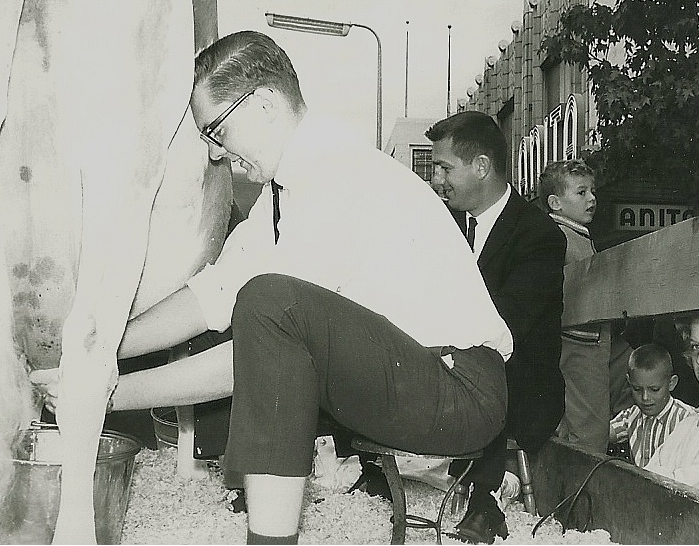
“While I was at KPUG, I got married and was recruited by the local Boy Scouts’ council to advise a new Air Explorer squadron at the Bellingham Airport. I held Eagle Scout rank and had worked in scouting leadership in Montana. That was a wonderful experience and I still have the engraved cigarette lighter they gave me when I left Bellingham. (Fortunately, I stopped smoking several years later!) Ironically, I received an email about two years ago from a guy in Arizona who was one of my scouts. He wondered what happened to me and where I ended up. His questions were similar to those asked by QZVX.
“I took flying lessons in Bellingham and earned a private pilot’s license while working at KPUG. (I continued to own various airplanes and flew thousands of hours until I sold my last airplane several years ago.)
 “Word of my ‘Telstar’ stunt triggered a call from KNEW (later KJRB) in Spokane. The Top 40 station shortly thereafter offered me the drive-time spot there — it was a 5,000-watt Top 40 station. KNEW, KJR and a Portland station were all owned, in part, by Frank Sinatra and Danny Kaye. I worked in Spokane full-time under the name Mike Mitchell until June, 1965. At that time, I finally finished my college education with a Bachelor’s degree from Eastern Washington State College in Cheney.
“Word of my ‘Telstar’ stunt triggered a call from KNEW (later KJRB) in Spokane. The Top 40 station shortly thereafter offered me the drive-time spot there — it was a 5,000-watt Top 40 station. KNEW, KJR and a Portland station were all owned, in part, by Frank Sinatra and Danny Kaye. I worked in Spokane full-time under the name Mike Mitchell until June, 1965. At that time, I finally finished my college education with a Bachelor’s degree from Eastern Washington State College in Cheney.
“Radio was changing a lot, and after eight years in the business at the age of 24 (and married) I wanted to move into something with a better future. The fact my Mike Mitchell fan club was filled with 13-year-olds, who constantly tracked me down at home or through my unlisted number, probably also weighed on my decision. The station had excellent management. I dodged a bullet there when PD Jerry Kay initially insisted that my air name should be ‘Peter Hook.’ When I left, they actually threw an exceptional going away party for me as part of an outdoor Battle of the Bands featuring Paul Revere and the Raiders. I even got up there on the bandstand and joined The Raiders in ‘Louie, Louie.’
![]()
“While in Spokane, I interviewed with a team from Pacific Northwest Bell. In the fall of 1965, they offered me a position in their PR department in Seattle as a staff writer for their regional magazine ‘Cascades.’ I also wrote speeches for some of the senior executives. A year later, I was moved into their management development program and was promoted to business office manager back in Spokane. (Shortly after I moved back to Spokane, my PR buddies at Pacific Northwest Bell ran an ad in the Spokesman Review newspaper with the banner: ‘Mike Mitchell is back and can be reached at xxx-xxxx.’ The senior managers in PNB’s commercial department were not amused.

“Pacific Northwest Bell was an AT&T majority-owned company. I had an outstanding 18-year career with AT&T, moving on to public relations management jobs in San Francisco, New York City (twice), Portland, Oregon and New Jersey. I took an early retirement in 1984 to start a commercial mortgage banking company with two partners. We ran that for 14 years and sold it to a national company (Paine Webber Mortgage DBA PW Funding). By that time my wife and I had a second home in Steamboat Springs, Colorado where I was ready to retire at age 59. Then PW Funding asked me to stay on as the Chief Executive Officer in Long Island and New York City and take the company public. I did that and finally retired in 2003. We moved permanently to Steamboat Springs then, but most recently sold that home in the mountains and moved to Fort Collins, which is about 60 miles north of Denver.
“Even today, when people hear my voice, I am frequently asked if I ever worked as a radio announcer. (My voice sure sounds a lot better now than on the ‘Telstar’ recording.) I have wonderful memories of those years I spent in radio, which included great experiences at each station, and the opportunity to tour with many of the top acts of the sixties including the Beach Boys, Roy Orbison, Jerry Wallace, the Everly Brothers, Gene Pitney and others. I believe that pretty well answers any questions about whatever happened to Mike Forney.” – Mike Forney

Below is the edited version of an approximately one hour long recording of Mike’s ‘Telstar’ lock-in stunt. The original reel to reel recording was muddied by hiss and white noise. That tape has since been cleaned up and scoped down to 14 minutes. I think you’ll agree that it sounds good for a recording that is almost 60 years old.
Run time 14:11
 Final note from the editor: Until recently I didn’t know who gave me the original Forney-Telstar recording. I had acquired it in 1972 from a friend of Jay Hamilton (PD at KBFW-Bellingham). It ends up I got it from John Carver and the story goes like this. John Carver (he had been “Mike Archer” at KPUG for a few months in 1965) was an engineer in LA by ’72. When he visited Bellingham, Carver brought along a collection of tapes to share with Jay. They were listening in the KBFW production room and I heard the name “Mike Forney,” and recognized the strains of “Telstar.” I correctly guessed this was a recording of Forney’s locally infamous show that I had heard stories about. I asked for a dub and stored my copy in a drawer for nearly 25 years. In 1998, when all of the Bellingham radio stations were purchased by Saga Communications, I donated my reel of tape to Dick Stark at KPUG. Seventeen years later, when I began writing historical articles, I regretted not having a copy of that recording. By happenstance, Dick and I shared a bus ride from SeaTac airport to Bellingham and I explained the situation. A few days later, he presented me with a copy of Forney’s broadcast. And that’s how I ended up with a nearly sixty year-old recording that even Mike Forney didn’t know existed. My thanks to Jay Hamilton (after reconnecting with him this summer) for filling in the name of the mystery man who provided me with the original tape recording.
Final note from the editor: Until recently I didn’t know who gave me the original Forney-Telstar recording. I had acquired it in 1972 from a friend of Jay Hamilton (PD at KBFW-Bellingham). It ends up I got it from John Carver and the story goes like this. John Carver (he had been “Mike Archer” at KPUG for a few months in 1965) was an engineer in LA by ’72. When he visited Bellingham, Carver brought along a collection of tapes to share with Jay. They were listening in the KBFW production room and I heard the name “Mike Forney,” and recognized the strains of “Telstar.” I correctly guessed this was a recording of Forney’s locally infamous show that I had heard stories about. I asked for a dub and stored my copy in a drawer for nearly 25 years. In 1998, when all of the Bellingham radio stations were purchased by Saga Communications, I donated my reel of tape to Dick Stark at KPUG. Seventeen years later, when I began writing historical articles, I regretted not having a copy of that recording. By happenstance, Dick and I shared a bus ride from SeaTac airport to Bellingham and I explained the situation. A few days later, he presented me with a copy of Forney’s broadcast. And that’s how I ended up with a nearly sixty year-old recording that even Mike Forney didn’t know existed. My thanks to Jay Hamilton (after reconnecting with him this summer) for filling in the name of the mystery man who provided me with the original tape recording.
Check out an audio clip and a short story about Mike Forney (AKA Mike Mitchell at KNEW-Spokane in 1965) by clicking here.
Click on the names below to read about these broadcasters who were popular in Bellingham and Whatcom County, including nearby Canadian legend Red Robinson:
Danny Holiday (KPUG)
Dick Stark (KENY & KPUG)
Kirk Wilde (KPUG)
Gary Shannon (KPUG)
Mike Forney (KPUG)
Jay Hamilton (KPUG & KBFW)
Bob O’Neil & Marc Taylor (KPUG)
John Christopher Kowsky (KPUG)
Haines Faye & Rogan Jones (KVOS & KGMI)
Tom Haveman (KENY & KVOS)
Red Robinson (Vancouver B.C.)
Presently editor and historical writer with QZVX.COM in Seattle. Former radio broadcaster and radio station owner, 1970-1999. Journalism and speech communications degrees. I enjoy researching articles and online reporting that allows me to meld together words, audio and video. P.S. I appreciate and encourage reader comments and opinions. View other articles by Steven Smith

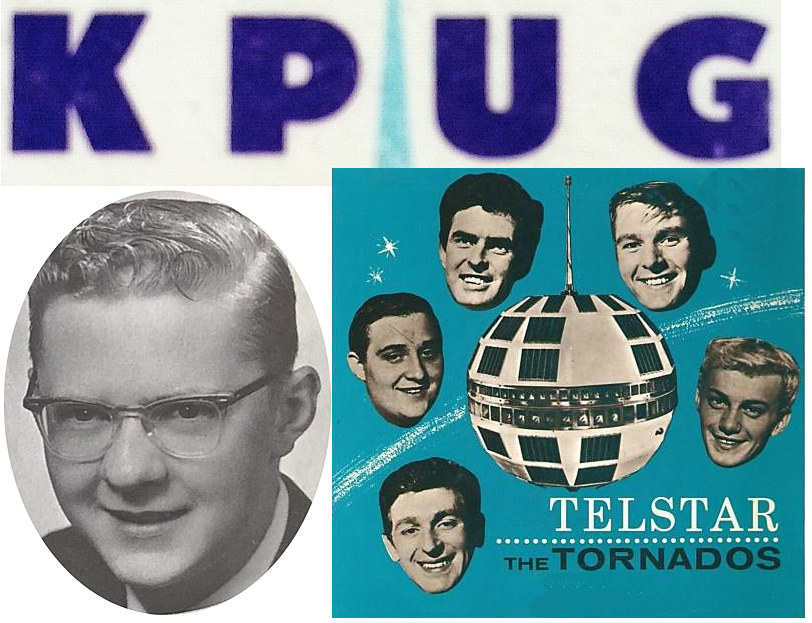
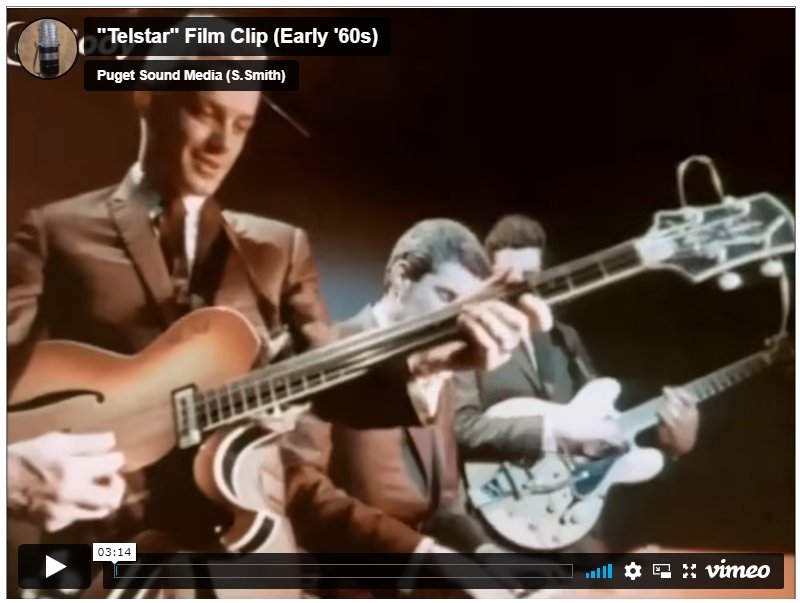

There were many such “lock-downs” fabricated after this one at stations across the nation. Then there was the movie FM in 1978. To pull something off like this and get national attention is quite a feat. Great story and a tip of the hat to Mr. Forney for making this happen on KPUG. Maybe this should be referenced on the Wikipedia page https://en.wikipedia.org/wiki/Telstar_(instrumental) somehow.
It probably should be on wiki. I will see about adding it.
Thanks Dick. We are doing a former Kpug staff zoom reunion this month. Off the top of my head, John Sandifer, Gary Bruno, Mike Forney, Dick Stark, Kirk Wilde, Gary Shannon, Steve West, Jay Hamilton maybe, LA Marsh, Pete Kremen along with other employees from the rock n roll days will be there.
Bellingham was excellent for radio listening in the sixties. Besides KPUG we got to hear great stations from Seattle and Vancouver. Many Canadian songs that many people in The States never heard.
https://forums.stevehoffman.tv/threads/every-rpm-canadian-content-1-single-discussion-thread-1964-2000.987585/
From our house in north Seattle, I listened to a lot of Canadian radio from the 1940’s through the 60’s. Some faves were CJOR 600, CBU 690, CFAX 810 when it was a daytimer, CJVI 900 (Radio 9 where listening’s fine), CKWX 1130, CFUN 1410, CHUB 1570 Nanaimo, CFCN 1060 Calgary, CBK 540 Regina etc.
No Bellingham, but I could hear KARI 550 from Blaine.
I think the two FMs hit Seattle, but we are talking about the earlier classic AM years. None of the AMs had a good signal into Seattle….got sketchy by Everett.
I forgot about FM. In the 70’s I was able to pick up KISM-FM. But that might have been when my stereo was hooked to cable.
Great article and great writing, Steve! Obviously, Bellingham was a great radio town. I regret that I never heard any of it. As I’ve mentioned to you, Bellingham stations just didn’t make it into my North Seattle neighborhoods.
Absolutely outstanding Steven. I very much enjoyed the read and the history lesson. I always enjoy your posts on Bellingham Memories Facebook page. Thank you.